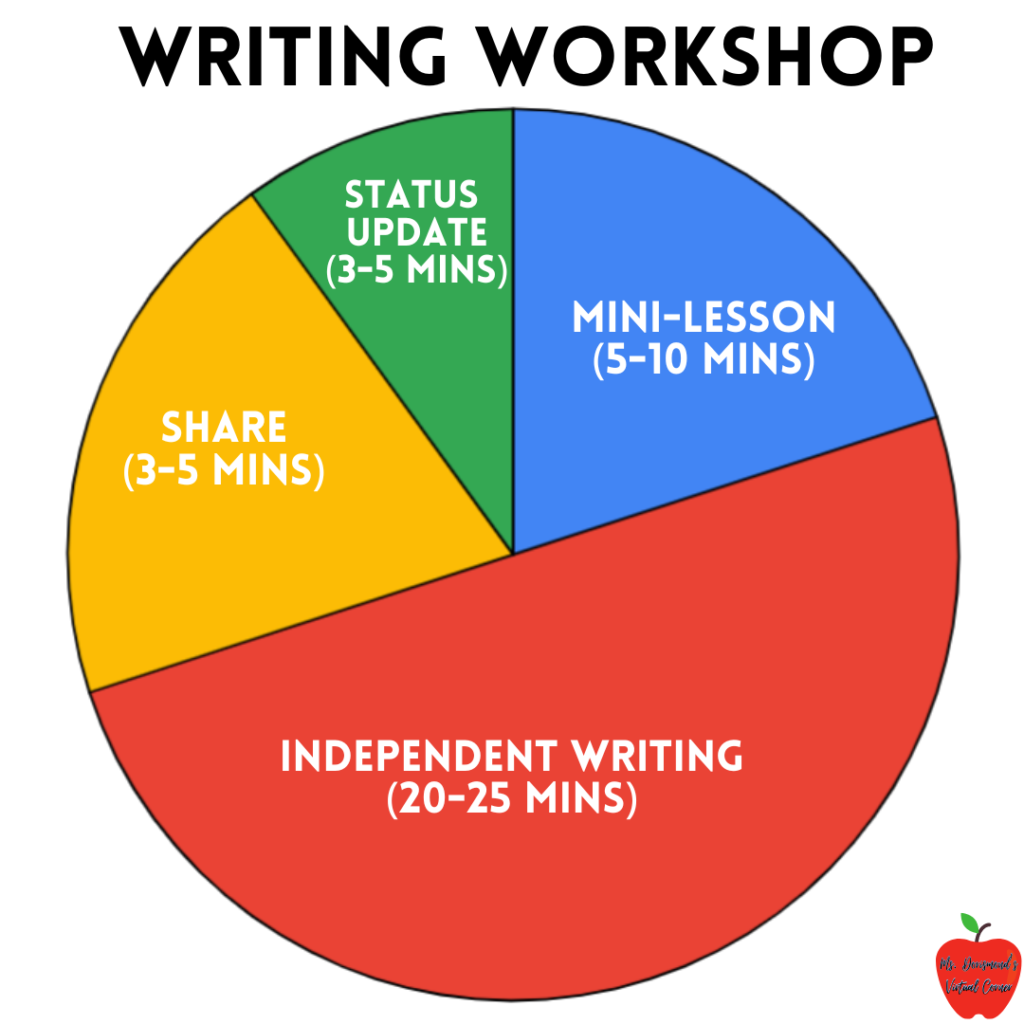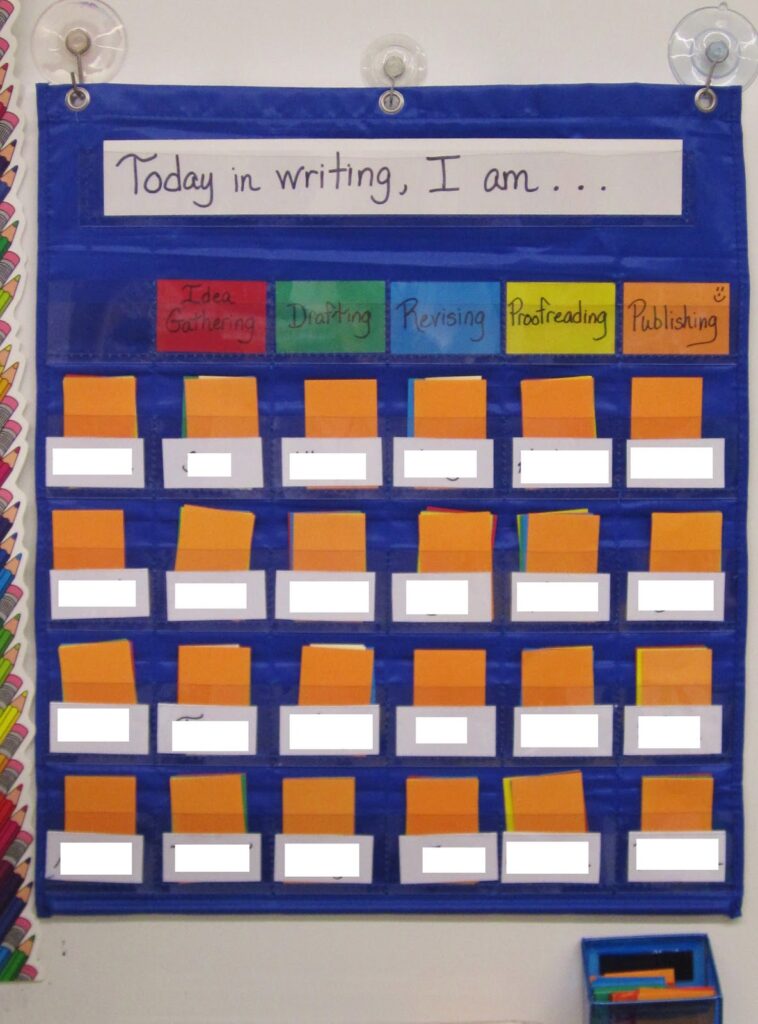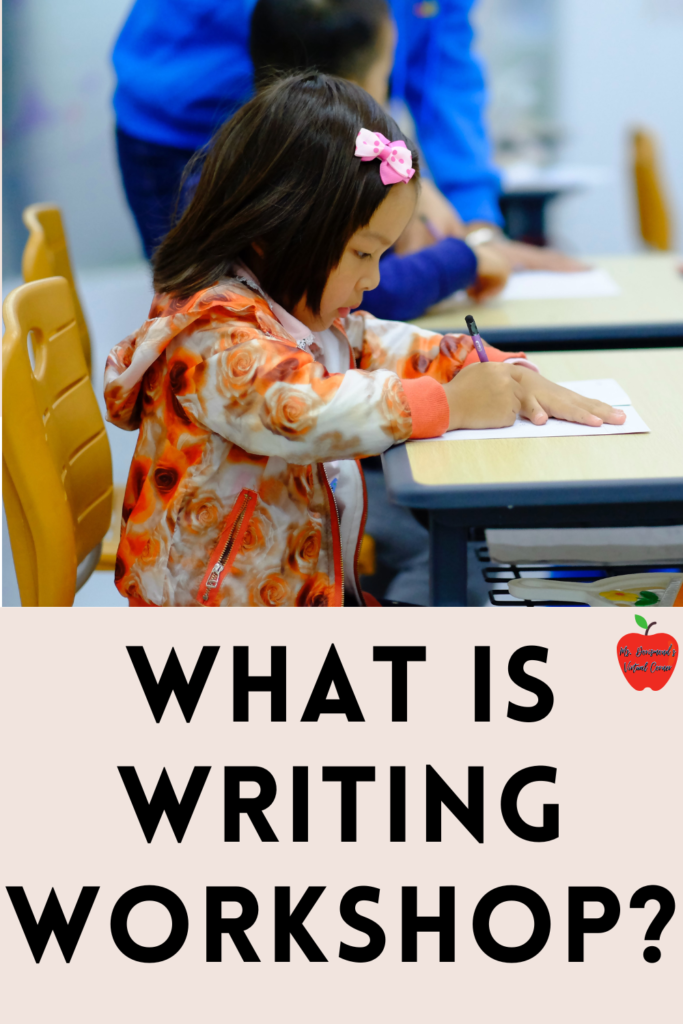Learning how to write can be a challenging task. There is no wrong or right way to write so writing can be subjective. Our students can bring a myriad of unique needs and personalities into the classroom, so it is crucial that educators provide instruction that meets their educational needs.
For teachers, this makes teaching writing just as challenging. As educators, we must find dynamic and creative ways to keep students eager and engaged in writing. But, before we can do that, we need to answer these questions…
- What is a writing workshop?
- What are the main parts of a writing workshop?
- How can I effectively use a writing workshop in my classroom to teach students how to write?
- How can I use a writing workshop to meet the needs of my students?
What is Writing Workshop?
Writing workshop is a student-centered framework used to teach the writing process. It is based on the concept that students learn best when given the time and physical space to write as often and as much as they can.
Writing workshop is used to teach the writing process which can include prewriting, brainstorming, planning, drafting, revising, editing, and publishing. This is also when we teach students writing crafts such as adding dialogue, using strong words, imagery, and so much more.
In a true writing workshop, students are allowed to go through the writing process at their own pace. Since writing workshop is a framework for teaching, it only makes sense that it would include stages. Therefore, writing workshop is broken into three main parts.
What are the main parts of a writing workshop?
The three parts of writing workshop are the mini-lesson, independent writing, and the share which for most teachers also acts as the closing of the lesson. Though there are three main parts, I like to squeeze in a fourth optional part between the mini-lesson and the independent writing. This part is optional because every teacher has their own style of teaching.

1. Mini-lesson (5-10 minutes)
This would be considered the TEACH part of the lesson as it is the teacher-directed part of the writing workshop. Mini-lessons should be assessment-based instruction that explicitly teaches students a writing skill they must master. Mini-lessons should be brief and should focus on one skill that all writers should be able to apply to their own writing regardless of their skill level.
Most schools provide teachers with a scope and sequence from a prepared curriculum to teach writing. Mini-lessons can also be inspired by a teacher’s observations during independent writing and conferencing. Therefore, a writing workshop can look very different depending on the teacher and the needs of their students.
During the mini-lesson, four components must be present within the allotted 5-10 minutes. A connection, the teaching, active engagement, and a link. It may seem like a lot but ideally, each component should take about 1-2 minutes allowing more focus on the active engagement component.
The connection is when you activate your students’ prior knowledge of the skill you intend to teach. The teach is the actual presentation of the skill. The active engagement gives students time for the supported practice of the skill. The link is when students make the connection between the skill learned and their own writing.
2. Independent Writing (20-25 minutes)
As the focus of the writing workshop is giving students the physical space and time for writing, the majority of that time is devoted to giving students the time to write. During this writing time, students may be at different stages of the writing process.
Independent writing time is ideal to construct a small group of students who may need additional support, or conferencing with individual students. The key is to help and observe students as they are writing. This is also a great time to capture data that can inform future instruction and lesson planning.
It is important that teachers use this time to listen to students as they share their progress. Here are a few conferencing questions that you can ask your students.
- What are you working on?
- Can you read some of your writing for me?
- How is your writing coming along?
- Is there anything I can help you with?
- What are you planning to do next?
3. Share (5-10 minutes)
Though many educators are tempted to skip this part of the mini-lesson, it is a crucial part of writing workshop. Not only does it act as another form of informal assessment, but it also gives young writers ownership of their writing.
Allowing students to share their writing will make them comfortable with seeing themselves as part of a writing community. Students can also receive inspiration from hearing their peers share their writing, resulting in them diving deeper into their own writing.
Sharing does not have to be a long and drawn-out process. Here are some tips for having students share their writing. These tips will allow you to keep sharing short and concise.
- Whole-class sharing: keep a running list of who has shared, and only have students share a portion of their writing.
- Partner-sharing: have students share their writing with peers.
- Swap-sharing: have students swap their work and read silently to themselves.
4. Optional: Status Update (3-5 minutes)
Now, this part is entirely optional depending on where your students are in writing. Ideally, it should be done after the mini-lesson and before students go off to write independently.
A status update is meant to be a quick check-in to see where your students are in the writing process. It can be a verbal check-in where you ask students to raise their hands if they are at the drafting stage, revising stage, editing stage, or whatever stage they may be on. It can also be a visual check-in that students update before and during their independent writing.
Now, you can make this easier by creating a chart that students update at the beginning of independent writing. They will continue to update this chart as they progress through the stages of the writing process. This is when you find out where your students are in the writing process. Here are is an example that you can use in your classroom.

How can I effectively use a writing workshop in my classroom?
At a first glance, using the writing workshop model in your classroom may seem like a difficult task but it doesn’t have to be. The key is to establish a routine that you and your students are comfortable with. Label your writing centers and make writing tools accessible within your classroom.
Once the routine is established, learn from your students. Use the data you gather from conferencing to understand what they need as writers and tailor your lessons to the writing skills they need while keeping in mind their individual writing needs. Most important of all, BE CONSISTENT! Students work best when they know what to expect.
Writing workshop gives young writers the physical space and time they need to develop their writing skills. Over time you will see an increase in your students’ writing volume, confidence, and skill. Hopefully, you will also build a writing community that nurtures the love of writing.



Nice response in return of this issue with real arguments and
describing all regarding that.